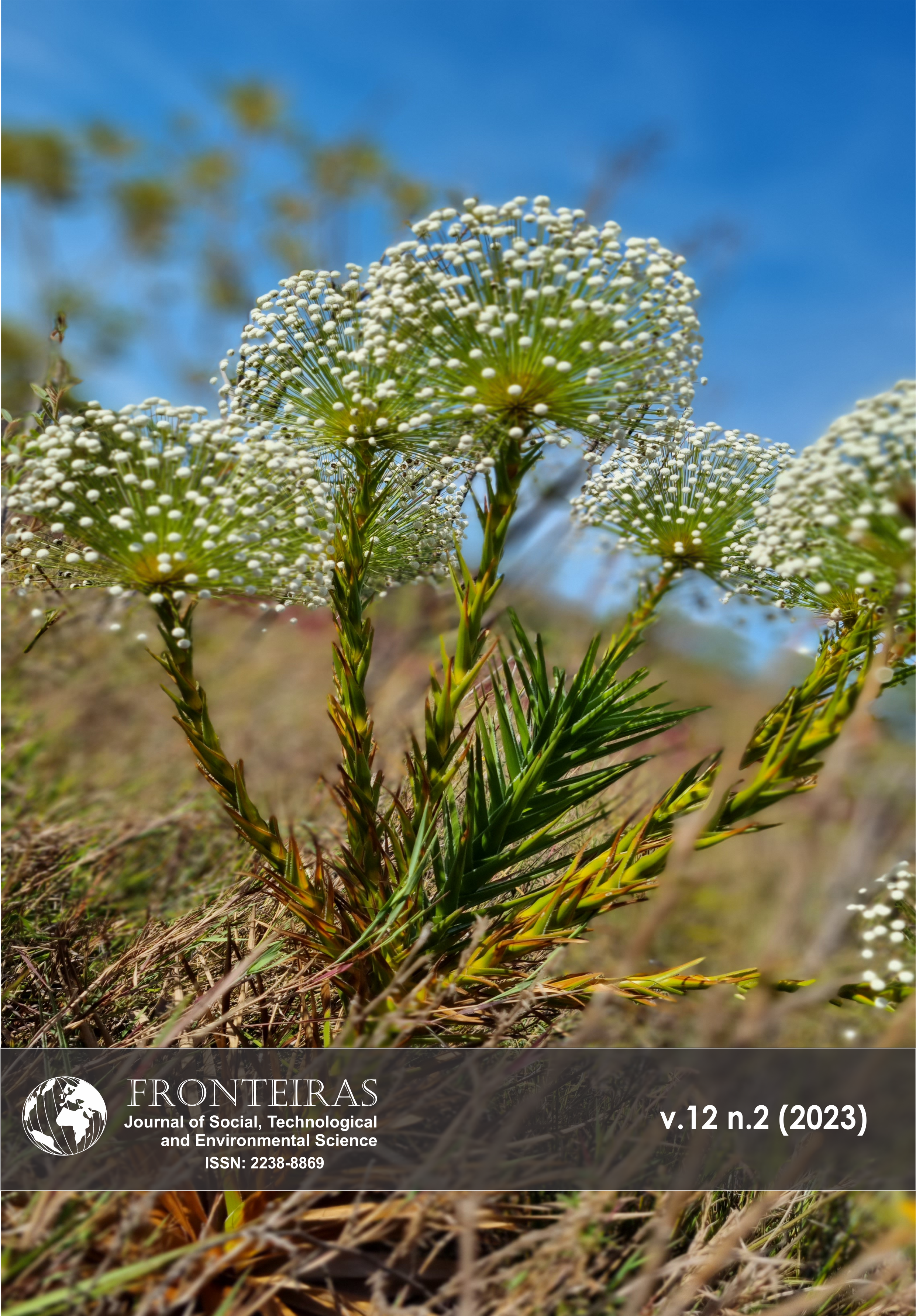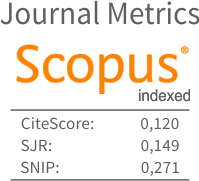Caracterização e Avaliação de Dois Sistemas Agroflorestais no Sudoeste Paulista
DOI:
https://doi.org/10.21664/2238-8869.2023v12i2.p63-76Palavras-chave:
agricultura familiar, agroecossistemas, indicadores, extensão universitáriaResumo
Os sistemas agroflorestais (SAF) vêm apresentando grande interesse em torno da conservação da biodiversidade e do solo, além de apresentar poder produtivo e de desenvolvimento social e ecológico. Porém, existem entraves que dificultam a ampla adesão a este modelo. O presente trabalho tem por objetivo caracterizar e avaliar as potencialidades e dificuldades dos SAF em contexto de agricultura familiar. Foram realizadas entrevistas com roteiros semiestruturados junto a dois agricultores familiares que detêm sistemas agroflorestais, implantados nos anos de 2018 e 2019, como parte de um projeto de extensão universitária ligado ao campus Lagoa do Sino da UFSCar, nos municípios de Itaberá – SP e Buri – SP. A avaliação dos sistemas se deu de forma multidimensional, por meio de indicadores sociais, econômicos e ambientais, construídos a partir da literatura e dos diálogos com os agricultores. Os principais resultados apontam as vantagens dos SAF para a transição agroecológica e como área demonstrativa, mas também relatam os desafios que enfrentam, sobretudo em termos da falta de retornos financeiros.
Referências
Altieri M 2004. Agroecologia: a dinâmica produtiva da agricultura sustentável, 4.ed. – Porto Alegre: Editora da UFRGS.
Barrionuevo M 2020. “¿ Cómo Se Evalúa Lo Económico En Las Experiencias Agroecológicas? Análisis de Las Perspectivas de 30 Instrumentos de Evaluación Del Desempeño Provenientes Del Sector Estatal, Privado y de La Economía Popular.” Revista Interdisciplinaria de Estudios Agrarios 52: 65–88.
Cândido G, Nóbrega M, Figueiredo M, Maior M 2015. “Avaliação Da Sustentabilidade De Unidades De Produção Agroecológicas: Um Estudo Comparativo Dos Métodos Idea E Mesmis.” Ambiente & Sociedade 18 (3): 99–120. https://doi.org/10.1590/1809-4422asoc756v1832015.
Caporal F Paulus G, Costabeber J 2009. Agroecologia: uma ciência do campo da complexidade. Brasília, 111 pp.
Carmo M 1998. A produção familiar como locus ideal da agricultura sustentável. Para pensar outra agricultura. Curitiba: ed. UFPR, p. 215-238.
Deponti C, Eckert C, Azambuja J 2002. Estratégia para construção de indicadores para avaliação da sustentabilidade e monitoramento de sistemas. Agroecologia e desenvolvimento rural sustentável, v. 3, n. 4, p. 44-52.
Duval H, Ribeiro M, Agapto J, Meira B, Silva Y, Garcia V, Serafim C 2021. Implantação de Sistemas Agroflorestais no Território Sudoeste Paulista: relatos de um projeto de extensão. In: Haliski A, Lopes K, Lopes P, Padilha R, (Orgs.). Saber e fazer Agroecológico. 1ed.Curitiba: Editora CRV Ltda., v. 1, p. 79-91.
Gavioli F, Costa M 2011. As múltiplas funções da agricultura familiar: um estudo no assentamento Monte Alegre, região de Araraquara (SP). Rev. Econ. Sociol. Rural, Brasília, v. 49, n. 2, p. 449-472.
Masera O, Astier M, López-Ridaura S 2000. El marco de Evaluación MESMIS. Sustentabilidad y Sistemas Campesinos. México: GIRA-Mundi-Prensa, p.13–44.
MESMIS 2021. Marco de Evaluación de Sistemas de Manejo Incorporando Indicadores de Sustentabilidad. Disponível em: <http://www.mesmis.unam.mx/>
Sambuichi R (org.) et al 2017. A política nacional de agroecologia e produção orgânica no Brasil: uma trajetória de luta pelo desenvolvimento rural sustentável.
Schuler H, Parra V, Joner F, Santos K, Simões-Ramos G, Siddique I 2017. “Benefícios de Sistemas Agroflorestais Agroecológicos (SAFAs) No Brasil: O Que Dizem Os Artigos Científicos?” X Congresso Brasileiro de Agroecologia, Brasília/DF. In: Anais Do VI CLAA, X CBA e V SEMDF, May 2017. https://cadernos.aba-agroecologia.org.br/cadernos/article/view/1494/236.
Souza M, Steindorff, A, Paula M, Formighieri E 2017. “SAFBD – Conhecimento Agroflorestal Ao Seu Alcance, o Banco de Dados de Parâmetros de Consórcio Para Sistemas Agroflorestais.” X Congresso Brasileiro de Agroecologia, Brasília/DF. In: Anais Do VI CLAA, X CBA e V SEMDF, May. https://cadernos.aba-agroecologia.org.br/cadernos/article/view/1057/590.
Souza R, Martins S, Verona L 2012. Gestão ambiental de agroecossistemas familiares mediante utilização do método MESMIS. XI Congresso da Sociedade Brasileira de Sistemas de Produção, , Pelotas/RS.
Speelman, E, Santiago L, Nuria A, Marta A and Masera O 2007. “Ten Years of Sustainability Evaluation Using the MESMIS Framework: Lessons Learned from Its Application in 28 Latin American Case Studies.” International Journal of Sustainable Development and World Ecology 14 (4): 345–61. https://doi.org/10.1080/13504500709469735.
Steenbock W, da Silva R, Froufe L and Seoane C 2013. Agroflorestas e sistemas agroflorestais no espaço e no tempo. In: Steenbock W, Silva L, Silva R et al (eds) Agrofloresta, ecologia e sociedade. Kairós, Curitiba, 39–60 pp.
Downloads
Publicado
Como Citar
Edição
Seção
Licença
Esta revista oferece acesso livre imediato ao seu conteúdo, seguindo o princípio de que disponibilizar gratuitamente o conhecimento científico ao público proporciona maior democratização mundial do conhecimento.
A partir da publicação realizada na revista os autores possuem copyright e direitos de publicação de seus artigos sem restrições.
A Revista Fronteiras: Journal of Social, Technological and Environmental Science segue os preceitos legais da licença Creative Commons - Atribuição-NãoComercial 4.0 Internacional.


